10 Common Firewood Mistakes: Insights from Expert
- July 2, 2024
- 2 comment
Let’s explore how to handle firewood the right way. If you’re just starting or have been around firewood for years, it’s easy to slip up. Managing firewood isn’t just about hard work; it’s about smart work—knowing what to do and when to do it. Here, we share ten easy mistakes to avoid, told by someone who knows wood inside and out. By the end of this, you’ll know how to keep your fire burning bright and your wood pile just right.
1. Procrastination in Preparation
One of the biggest mistakes when managing firewood is procrastinating on the cutting process. Many underestimate the importance of preparing wood well in advance. Hardwoods like hickory or oak are especially dense and require a lengthy period to dry adequately. Ideally, firewood should be prepared at least a year, or even a year and a half before it’s needed. This process includes cutting, splitting, and properly stacking the wood to ensure it dries thoroughly.

Starting early is crucial to avoid the pitfall of having unseasoned wood when it’s time to burn it. It’s not just about having the wood cut; it’s about giving it time to breathe and dry under the right conditions such as adequate sun, wind, and airflow. Regular engagement in cutting, splitting, and stacking throughout the year is essential. Like the wood yard operator emphasizes, think of it like planting a tree—the best time was years ago, and the next best time is now. Don’t wait until the fall or winter as that leaves the wood insufficient time to dry, and you’ll end up with inefficient, smoky burns.
2. Underestimating Quantity Needs
A frequent oversight in firewood management is not preparing enough wood for the winter, often underestimating how much is actually needed. This common misjudgment can lead to a critical shortage during long and harsh winters. As an experienced wood yard operator points out, it’s vital to cut more wood than anticipated. Not only does this serve as a buffer against unexpected cold spells, but it also ensures you have ample firewood to last through the season without disruptions.

Especially in cold climates, where winter seems to linger longer than expected, having extra firewood can be a lifesaver. This approach is akin to managing finances—more is definitely better. To be well-prepared, stack your wood accessibly to avoid the trouble of retrieving it under difficult winter conditions. Additionally, remember that different woods, like oak or hickory, take longer to dry and thus require even more foresight in preparation.
3. Timing Your Purchases
For those who prefer to buy rather than chop their own firewood, timing is everything. Purchasing firewood well before the winter season not only ensures you avoid shortages but also often secures more favorable pricing. As wood seasons and demand increases, prices can spike significantly in peak winter months. By planning ahead and buying early, you can avoid the scramble and potential price gouging that occurs when supplies dwindle.

This strategy is particularly crucial in colder regions where the need for wood extends over a longer period. To maximize efficiency and cost-effectiveness, buy more than you think you’ll need. This foresight not only provides peace of mind but also ensures you’re prepared for any prolonged cold spells. As an experienced wood seller notes, this approach mirrors his yearly preparation cycle, emphasizing that wood needs time to season properly. He highlights the necessity of continuous preparation—cutting, splitting, and stacking—as the key to staying ahead of winter demands.
4. Storage Fails
A common pitfall in firewood management is improper storage, particularly placing wood in locations that become inaccessible during winter, such as areas prone to deep snow or mud. This oversight can be highly inconvenient when the need for firewood peaks. To mitigate these challenges, it’s crucial to store firewood in accessible locations throughout the winter. Optimal storage includes near your residence or in a covered area that prevents the elements from complicating access.
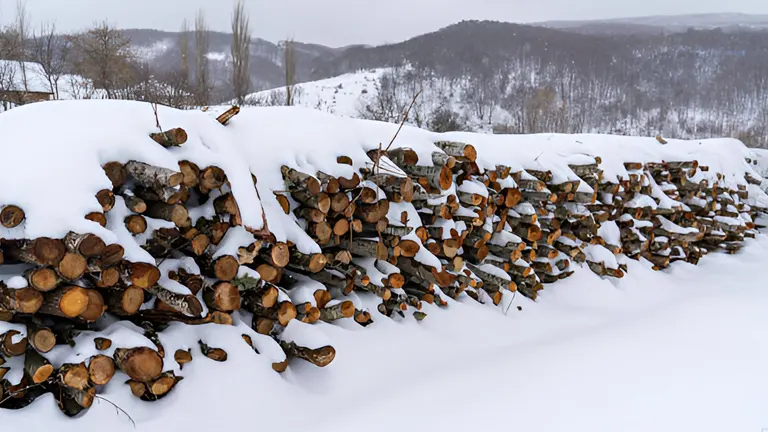
An experienced wood yard operator emphasizes the importance of strategic placement, not just for convenience but also for maintaining wood quality. He notes that even well-seasoned wood can suffer from exposure, leading to difficulties like moisture accumulation from snow, which can turn your wood pile into a “wood sickle,” especially if not properly covered. By planning your storage strategy with accessibility and protection in mind, you ensure your firewood is ready and efficient when you most need it.
5. Improper Cutting
A major error beginners often make in preparing firewood is leaving logs in large rounds, mistakenly believing they will dry sufficiently for burning. Wood dries from the outside in, meaning the exterior dries well before the interior. To accelerate drying, it’s essential to split the logs, thus increasing the surface area exposed to air.
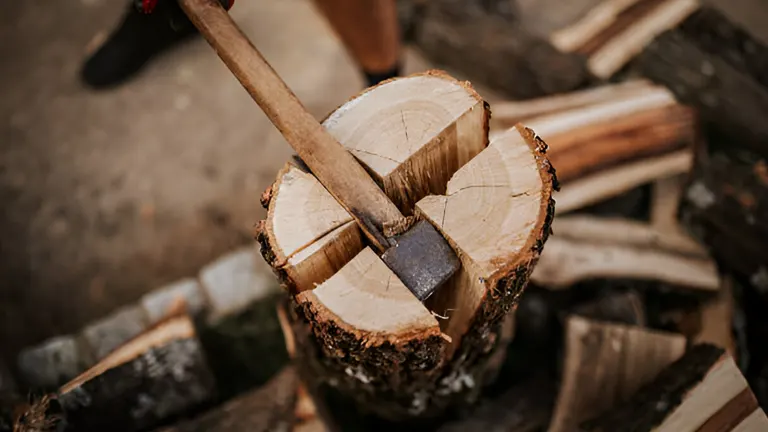
This not only speeds up the drying process but also ensures the wood is ready for efficient burning much sooner. A seasoned wood yard operator underscores the importance of splitting wood, noting that keeping logs in rounds or poorly split forms leads to inefficient drying. This can result in firewood that is difficult to ignite and burns poorly, affecting both heat output and burn quality.
6. Neglecting Proper Splitting
Many beginners in firewood preparation fail to split the wood adequately, which is particularly problematic for dense woods intended for long burns. Larger chunks of wood remain damp inside because the limited surface area exposed to air slows the drying process. Conversely, smaller wood pieces dry faster and ignite more readily, enhancing the efficiency and control of the burn.
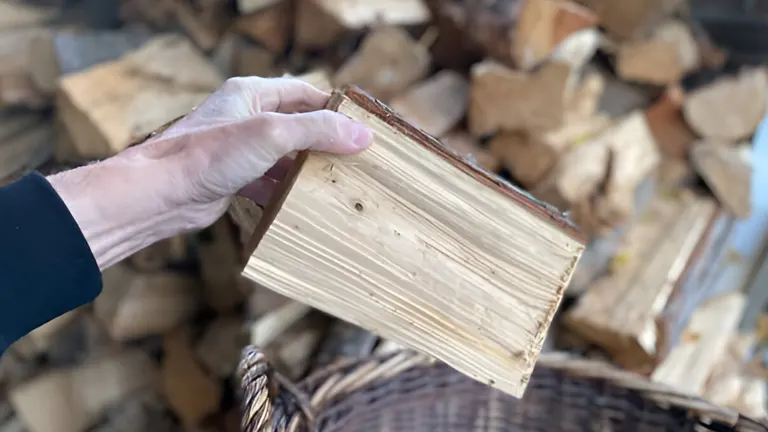
It is crucial to split the wood into manageable sizes that balance fuel efficiency with practical handling and storage. For anyone dealing with dense woods like oak or hickory, it’s essential to recognize that these types require thorough splitting. Inadequately split wood may result in extended drying times and inefficient burning. Proper splitting increases the surface area exposed to air, accelerating the drying process, and ensuring that the wood is more manageable for use in fires.
7. Lack of Variety in Wood Sizes
For efficient fire management, it’s important to have a strategic variety of wood sizes. Smaller pieces of wood ignite more quickly and are essential for starting fires, while larger logs are beneficial for maintaining a fire as they burn slower and more steadily. This combination not only facilitates easier fire starting but also enhances the longevity and stability of the fire, providing consistent heat over longer periods.
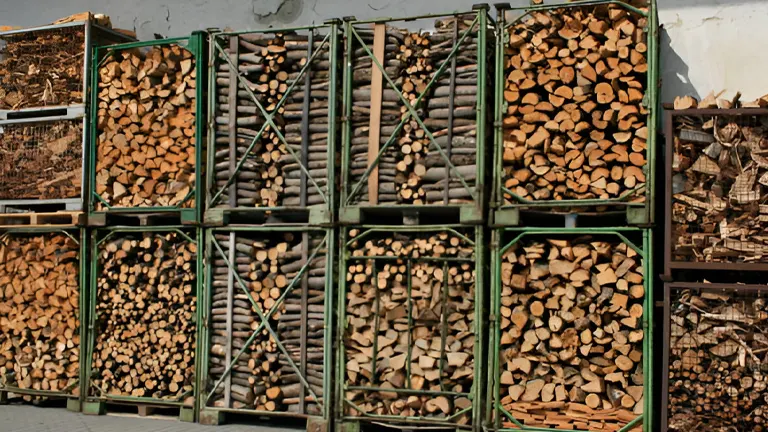
Keeping a stock of both small kindling and larger logs significantly improves the practicality and enjoyment of using wood fires. A well-mixed stock of wood sizes ensures you can easily manage and control the burn rate, improving both the efficiency of your fire and the overall experience. It’s a simple strategy that can make a big difference in the performance and convenience of your firewood usage.
8. Ignoring Wood Placement
Properly stacking and storing wood is crucial for ensuring it dries effectively and remains usable over the long term. Elevating wood off the ground is essential to avoid moisture from the soil, which can lead to decay. Utilizing pallets to raise the wood and tarps for covering it during adverse weather conditions can protect the wood from rain and snow, while still allowing air to circulate.

This strategy significantly reduces the risk of rot and mold, preserving the quality and burn efficiency of the wood. Effective placement ensures the wood remains dry and ready for use, no matter the weather. Understanding and implementing correct wood storage techniques can greatly impact the longevity and quality of your firewood, making it ready whenever you need it.
9. Covering Strategies
To maximize the drying effectiveness and ensure the wood remains usable through winter, it’s crucial to adopt smart covering strategies. Waiting until later in the year to cover the wood allows it to benefit from maximum exposure to the sun and air during the warmer months, crucial for drying.
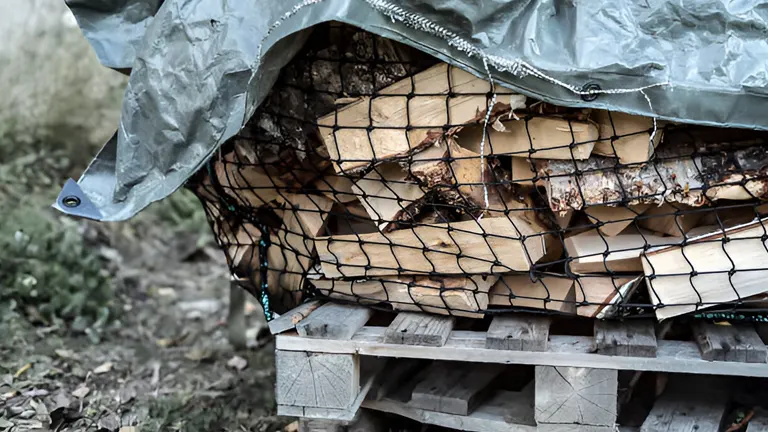
Covering the wood too early can trap moisture within the stack, preventing proper drying and potentially leading to mold and decay. Timing your wood coverage appropriately as the wet season approaches ensures that the wood retains its quality and burn efficiency, ready for use when needed most. Effective coverage planning, including using tarps or other protective materials, protects the wood from moisture while still allowing necessary airflow to maintain its condition throughout the seasons.
10. Avoiding Laziness
Firewood management is a continual, year-round responsibility that demands consistent effort. Many fail because they underestimate the effort required to prepare and maintain their firewood supply adequately.
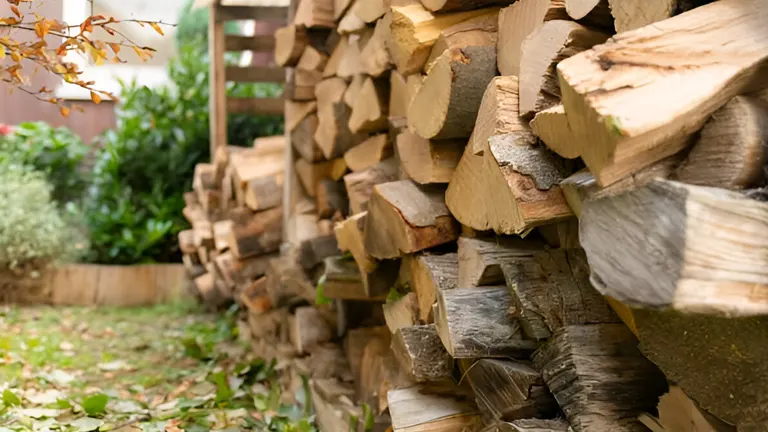
Regularly scheduled cutting, splitting, and stacking are crucial for ensuring that the wood is properly seasoned and ready when needed. To avoid the common pitfall of laziness, it’s vital to establish and adhere to a regular schedule for these tasks. This proactive approach helps to avoid last-minute scrambles for firewood and ensures a steady supply of well-seasoned wood for the colder months, enhancing both efficiency and warmth.
Wood Type Guide
| Wood Type | Burn Rate | Heat Output | Best Use |
|---|---|---|---|
| Hardwoods | Slow | High | Long-lasting heat for stoves |
| Softwoods | Fast | Moderate | Kindling, quick fires |
| Fruitwoods | Moderate | Moderate | Cooking, aromatic fires |
| Nutwoods | Slow | High | Heating, cooking, good aroma |
Seasonal Preparation Guide for Firewood Management
Spring
- Assessment and Cleaning: Start by clearing away any debris or leftover wood from winter. This is a great time to inspect and repair storage areas and tools.
- Cutting and Splitting: Begin cutting and splitting wood for the next winter. Freshly cut wood will have ample time to dry throughout the warmer months.
- Pest Management: Treat wood piles as needed to protect against pests that can cause damage during warmer weather.
Summer
- Continued Splitting: Continue processing any remaining logs to take advantage of drying during the hottest months.
- Storage: Ensure wood is stacked in well-ventilated areas to promote air circulation and speed up drying. Avoid ground contact by using pallets or racks.
- Covering: Consider covering the top layer of wood to protect against summer rains while ensuring the sides remain open for air flow.
Fall
- Final Preparations: Finish any cutting and splitting early in the season. Begin to transition your focus towards ensuring your winter supply is ready.
- Storage Checks: Check the moisture content of your wood; it should be around 20% or less before it’s considered ready to burn efficiently.
- Protection: Fully cover wood piles to protect against early snow and rain, but ensure there’s enough airflow to prevent moisture buildup.
Winter
- Usage and Monitoring: Use the oldest and driest wood first. Keep an eye on your wood supply and how it’s holding up against the weather.
- Accessibility: Keep paths to your woodpile clear of snow and ice for easy access throughout the season.
- Planning: Assess your wood usage rate and plan accordingly for the next year’s supply to avoid shortages.
By following these seasonal tips, you can maintain a high-quality supply of firewood that burns efficiently and is ready when you need it. This cycle of preparation and maintenance ensures you’re never caught unprepared, no matter what the weather brings.
FAQs
- When is the best time to cut firewood?
Ideally, firewood should be cut in late winter or early spring. This allows ample time for it to dry throughout the warmer months, ensuring it’s ready to burn by the next winter. - How should firewood be stacked for optimal drying?
Firewood should be stacked off the ground on pallets or rails to allow airflow underneath. Stacks should be placed in a sunny location with good air circulation and covered on top to protect them from rain and snow while allowing the sides to breathe. - How can you tell if firewood is dry enough to burn?
Dry firewood typically has cracks at the ends, is lighter in weight, and makes a hollow sound when struck against another piece of wood. Moisture meters can also be used for a more accurate measurement; ideally, firewood should have a moisture content of 20% or less before burning. - What is the proper size for cut firewood?
Firewood should be cut to fit your stove or fireplace, usually between 16 to 18 inches long. Splitting the wood into pieces about 6 to 8 inches wide helps it dry faster and burn more efficiently. - Does the type of wood affect how it should be stored?
Different types of wood can dry at different rates. Dense hardwoods like oak and hickory take longer to dry and benefit from at least a year of seasoning, while softer woods like pine can be ready in as little as six months. - What are the risks of improperly stored firewood?
Firewood that is not stored properly can remain damp, leading to mold growth and pest infestations. It can also rot if left in contact with the ground or in poorly ventilated conditions.
We hope you found this guide on firewood preparation and storage useful! If you have any tips or questions, or if there’s something we missed, don’t hesitate to share in the comments below. We love hearing from you and your input helps enrich our community’s knowledge and resources. Happy burning!

David Murray
Forestry AuthorI'm David Murry, a forestry equipment specialist with a focus on chainsaw operation. With over 13 years of experience, I've honed my skills in operating and maintaining a wide range of machinery, from chainsaws to log splitters. My passion for the outdoors and commitment to sustainable forestry drive my work, which emphasizes safety, efficiency, and staying updated with industry advancements. Additionally, I'm dedicated to sharing my expertise and promoting environmental awareness within the forestry community.









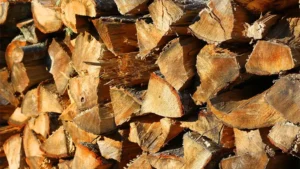



Hi David -- I'm not sure if some of the white oak firewood I just bought is usable. The outer, light ring in many pieces seems soft, kind of 'pithy'. I can see in some where the small cracks that radiate from the center of the log fade but do go through this outer layer to the bark; I except these as good. In others the outer layer is softer, less dense. When I split for kindling I find 'nest dust' with signs of past infestation. I do get some kindling from these pieces but it seems I waste a lot. Much of the wood meters 25%-35%. I think some of this wood is split from trees as if sitting in the woods for a year or more. The seller is willing to replace the load, but I'd appreciate your thoughts. -- Gary/Anniston, AL
Gary
October 27, 2024 9:32 pmHi Gary! Sounds like your white oak might not be fully seasoned. The "pithy" outer layer and "nest dust" hint at past pest activity or decay, especially if it was sitting in the woods too long. With moisture levels of 25-35%, it’s not quite ready to burn efficiently. I'd recommend accepting the replacement load and ensuring the new wood is freshly split and stored off the ground. Hope this helps!
David Murray
October 28, 2024 1:30 am